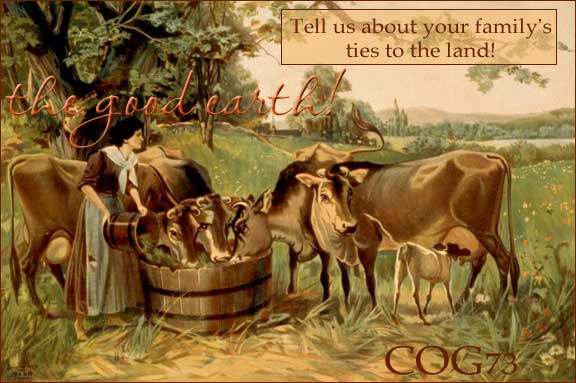The theme for Week 13 of the 2015 edition of the “52 Ancestors in 52 Weeks” challenge is “Different” and my ancestor is my 3rd great-grandmoter, Teofila Zakrzewska Pater . The theme of “Different” could have allowed me to choose any of my ancestors, for I am different from all of them in one respect: I will never be anyone’s ancestor. I chose to highlight one of my female ancestors in Poland who led a life very different from mine.
Teofila’s Story
Teofila Zakrzewska was born on 27 December 1840 in a small town called Mariampol near Grodzisk Mazowiecki, Poland. Her father, Karol Zakrzewski, was a farmer. Teofila was his first child with his wife Rozalia Kowalska. Karol was married before and had at least three children already. Rozalia was also a widow.
Teofila had two brothers: Wincenty and Józef. Sadly, their father died at the age of 55 in 1854. At the time of his death, Teofila was only 13 years old. Their mother did not remarry and lived until the age of 67.
Teofila meets the definition of different as she is the only ancestor in my family tree with the beautiful name Teofila! The name is the feminine version of Teofil, which means “friend of God”. Her parents practiced the Polish custom of naming their children based on the saint’s feast day on the day of their birth or closest to it: the feast of St. Teofila is 28 December and she was born on the 27th. The family name of Zakrzewski may look different to American eyes, but it was a very common surname, especially in the area where she was born.
 Teofila’s life was a lot different than mine. The biggest difference is that she got married at the age of 18. She and her husband, Jan Pater, went on to have ten children in the next twenty-four years! My 2nd great-grandfather, Józef Pater, was their third child.
Teofila’s life was a lot different than mine. The biggest difference is that she got married at the age of 18. She and her husband, Jan Pater, went on to have ten children in the next twenty-four years! My 2nd great-grandfather, Józef Pater, was their third child.
Teofila would live long enough to know many of her grandchildren. In 1905, she said good-bye to her son Józef when he left for America. His wife and six children would follow in the next two years. I have not followed up on all of Teofila’s children since the records switch to the Russian language in 1868 (which is more difficult to translate), but I do know that at least three other children lived to adulthood: Marcin, Paulina, and Stanisław.
Teofila died on 15 November 1907 in Żyrardów just a month before her 67th birthday. Her husband Jan lived for another ten months before he also passed away.
Like many of my Polish ancestors, Teofila lived her entire life in a very small area in central Poland, but the country of Poland did not exist during her lifetime. It was under Russian occupation. Her grandchildren who did not emigrate to America would live to see Poland re-emerge on the map of Europe in 1918. Teofila’s grandson, Józef Pater, was one of the men who fought for Poland’s freedom.
Teofila’s life was quite different from mine and I don’t know much about her other than what I’ve discovered in birth, marriage, and death records. But I am very grateful for her life and the love she had for her family.
Just the Facts
- Name: Teofila Zakrzewska Pater
- Ahnentafel: #49 (my 3rd great-grandmother)
- Parents: Karol Zakrzewski (1799-1854) and Rozalia Kowalska (1808-1875)
- Born: 27 December 1840 in Mariampol, Jaktorów, Grodzisk Mazowiecki, Poland
- Siblings: Wincenty (b. 1846), Józef (b. 1853); Half-siblings: Jana Elżbieta (b. 1825), Wojciech (b. 1827), Magdalena (b. 1829)
- Married: Jan Pater (1834-1908) on 10 October 1859 in Wiskitki, Poland
- Children: Marcin (b. 1860), Ewa (b. 1862), Józef (1864-1945), Antonina (b. 1867), Paulina (b. 1874), Paweł (b. 1876), Bronisława (b. 1877), Bronisław (b. 1879), Władysław (b. 1882), Stanisław (b. 1884)
- Died: 15 November 1907 in Żyrardów, Poland
- My Line of Descent: Teofila Zakrzewska Pater-> Józef Pater-> Ludwik Pater-> Henry Pater-> mother-> me
Written for the 52 Ancestors in 52 Weeks: 2015 Edition– Week 13: Different
#52Ancestors






